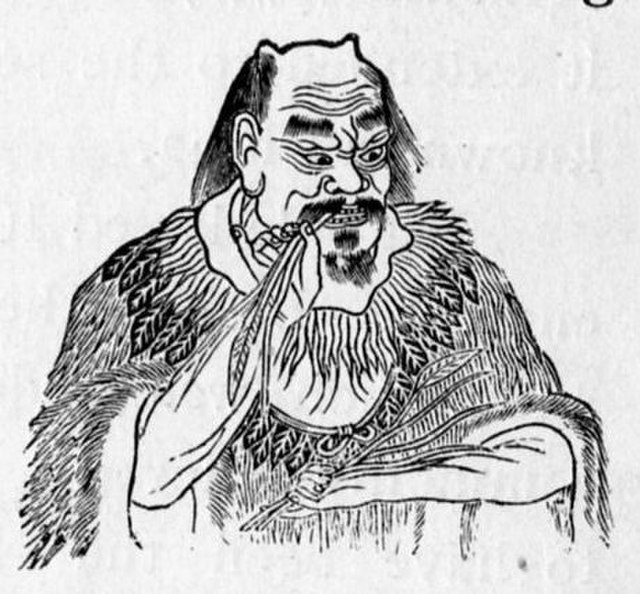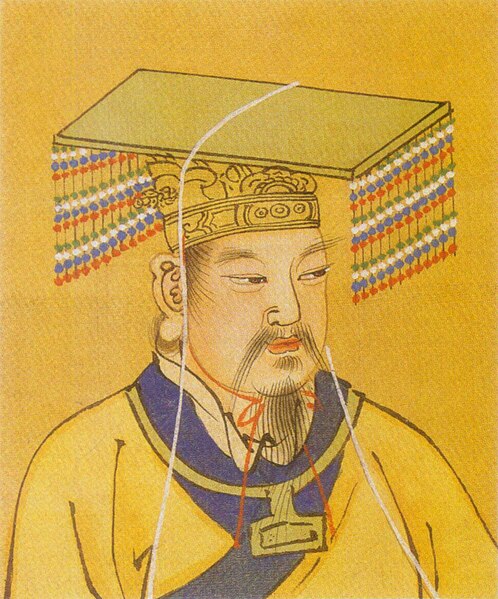The Yellow Emperor, also known as the Yellow Thearch or by his Chinese name Huangdi, is a mythical Chinese sovereign and culture hero included among the legendary Three Sovereigns and Five Emperors, and an individual deity (shen) or part of the Five Regions Highest Deities in Chinese folk religion. Calculated by Jesuit missionaries, who based their work on various Chinese chronicles, and later accepted by the twentieth-century promoters of a universal calendar starting with the Yellow Emperor, Huangdi's traditional reign dates are 2697–2597 or 2698–2598 BC.
The Yellow Emperor as depicted in a tomb from the mid 2nd century AD. The inscription reads: "The Yellow Emperor created and changed a great many things; he invented weapons and the well-field system; he devised upper and lower garments, and established palaces and houses."
As depicted by Gan Bozong, woodcut print, Tang dynasty (618–907)
Temple of Huangdi in Xinzheng, Zhengzhou, Henan
The eagle-faced Thunder God (雷神 Léishén) in a 1923 drawing, punisher of those who go against the order of Heaven
Three Sovereigns and Five Emperors
According to Chinese mythology and traditional Chinese historiography, the Three Sovereigns and Five Emperors were a series of sage rulers, and the first Emperors of China. Today, they are considered culture heroes, but they were widely worshipped as divine "ancestral spirits" in ancient times. According to received history, the period they existed in preceded the Xia dynasty, although they were thought to exist in later periods to an extent in incorporeal forms that aided the Chinese people, especially with the stories of Nüwa existing as a spirit in the Shang dynasty and Shennong being identified as the godly form of Hou Ji and a founder of the Zhou dynasty.
The Hall of the Three Sovereigns in Changchun Si (长春寺), a Taoist temple in Wuhan
Shennong tasting herbs to discover their qualities
Historian's depiction of the Yellow Emperor
Another depiction of the Yellow Emperor







